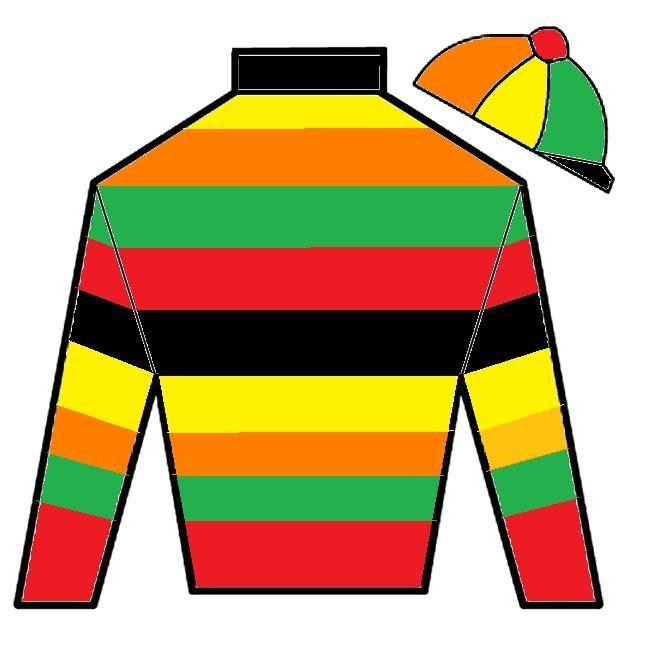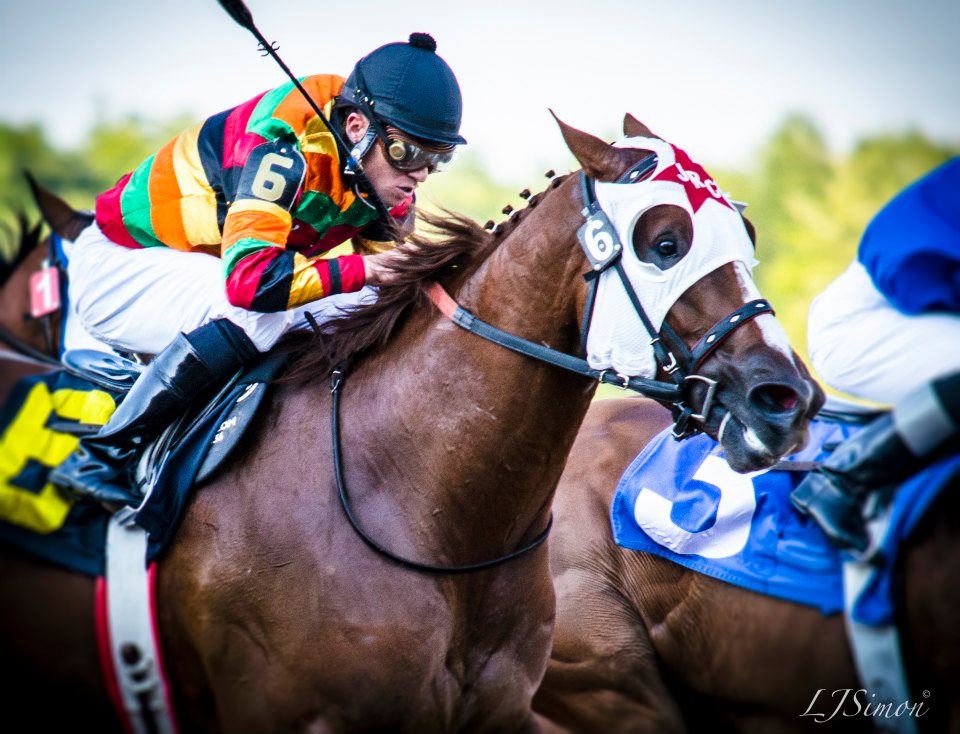|

 Keeneland
is a
racecourse and sales company dedicated to providing the highest quality
Thoroughbred services in the world, which in turn offers the best
potential for a return on investment. Keeneland strives to meet its
customers’ needs by offering sales at any level of
participation—new buyers are welcomed and given opportunities
to learn about the fun and excitement of Thoroughbred ownership. Keeneland
is a
racecourse and sales company dedicated to providing the highest quality
Thoroughbred services in the world, which in turn offers the best
potential for a return on investment. Keeneland strives to meet its
customers’ needs by offering sales at any level of
participation—new buyers are welcomed and given opportunities
to learn about the fun and excitement of Thoroughbred ownership.
Brief
History
Keeneland is located on 907 acres in the heart of rolling Kentucky
Bluegrass country, and it was established to be a “model race
track” to serve the sport in the fine traditions of
Thoroughbred racing from around the world. The philosophy and
principals that have characterized Keeneland throughout its history
remain unchanged. The pristine, park-like grounds were designed in the
late 1930's by the landscape architecture firm of Innocenti and Webel
to meet the needs of horsemen, and celebrate both horses and
Keeneland's guests alike.
Prior to World War II, many Kentucky horse breeders sent their
yearlings to Saratoga in New York to be sold at auction. Because of
wartime restrictions on rail transportation, the decision was made to
sell them in Lexington. The first yearling sale at Keeneland was
conducted Aug. 9, 1943. A future Kentucky Derby winner, Hoop Jr., came
from that inaugural sale, and a summer yearling sale has been held at
Keeneland every year since then.
Today, the September Yearling Sale at Keeneland has become the most
popular, most respected, and most profitable sale in the world.
Sales
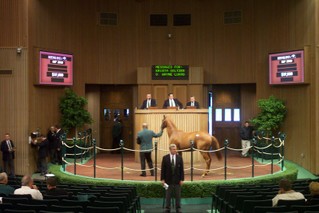 Anyone
interested in
attending a Keeneland Sale can simply
“just show up.” You do not need to buy a ticket,
make a reservation, or pay an admission price. Nor do you have to come
with any intention to buy. You are more than welcome to attend as an
observer—although seats in the Keeneland sales pavilion are
reserved for buyers and sellers. Anyone
interested in
attending a Keeneland Sale can simply
“just show up.” You do not need to buy a ticket,
make a reservation, or pay an admission price. Nor do you have to come
with any intention to buy. You are more than welcome to attend as an
observer—although seats in the Keeneland sales pavilion are
reserved for buyers and sellers.
The Keeneland September Yearling Sale has evolved into the world's
largest yearling sale. The first two days of the sale generally are
considered "Select" meaning that the horses sold in those sessions are
inspected and have met the highest pedigree and conformation standards.
Keeneland has cataloged a record 5,161 horses for its 2006 September
Yearling Sale, which runs September 11th through the 25th. It is the
largest Keeneland catalog ever.
Recent September Yearling Sale graduates include champions Ashado and
Stevie Wonderboy; 2006 Belmont Stakes (G1) winner Jazil; 2006 Kentucky
Oaks (G1) winner Lemons Forever; 2005 Breeders’ Cup Mile (G1)
winner Artie Schiller; and such Grade 1 stakes winners as English
Channel, Germance, Flower Alley, Les Arcs, Brother Derek, Sinister
Minister, Malibu Mint, Balance and Wait a While, among others.
The September Yearling Sale has also produced champions, such as 1998
Kentucky Derby and Preakness winner Real Quiet, 2002 Kentucky Derby and
Preakness winner War Emblem, 2003 Vodafone Epsom Derby winner Kris Kin,
2007 Kentucky Oaks and Belmont winner Rags To Riches, 1998 Belmont
winner Victory Gallop, 1999 Belmont winner Lemon Drop Kid,
Azeri, Farda Amiga, Left Bank, Orientate, Johannesburg, Caressing, and
Kona Gold.
Why
Keeneland?
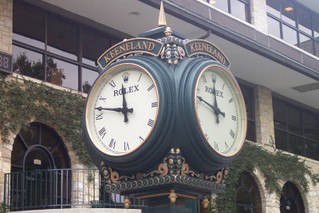 The Thoroughbreds
sold at
Keeneland are the best of the best
bloodstock, and are proven to be consistently versatile insofar as
their ability to race at any track around the world. Historically,
other sales offer very good horses, and their select products are
competitive at multiple locations. That said, across the board,
Keeneland prospects offer the highest quality pedigrees and better
breeding characteristics—which, in turn, improves the
horse’s competitive ability no matter where it runs. The Thoroughbreds
sold at
Keeneland are the best of the best
bloodstock, and are proven to be consistently versatile insofar as
their ability to race at any track around the world. Historically,
other sales offer very good horses, and their select products are
competitive at multiple locations. That said, across the board,
Keeneland prospects offer the highest quality pedigrees and better
breeding characteristics—which, in turn, improves the
horse’s competitive ability no matter where it runs.
Though the September Yearling Sale is known for its “high
roller” buyers, this sale also offers multiple days of very
good offerings for those who are working their way into the sport from
the ground up—such as Mojo Racing Partners. While it is true
that one could stretch their dollars the other sales, buying
at Keeneland is a matter of the investing in overall
quality of the bloodline; the racing versatility; and potential for the
future.
The
Gameplan
Keeneland is beautiful, and as noted
above, the racing facilities; the sales and barn areas; and the
surrounding grounds are manicured to be picture-perfect in every way.
In fact, the sales company caters to the buying experience. With
this in mind, utilizing a fundamental stratgey when selecting
Thoroughbred bloodstock is a wise approach in such an
inviting/mesmorizing atmosphere.
Before getting started, it's important to establish a line of
credit with the sales company, as well as make arrangements with a
transportation (a shipping company) to remove your horse(s) from
the sale grounds after your purchase.
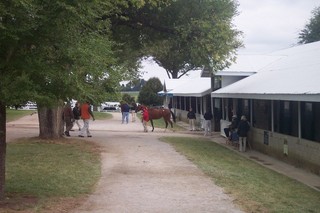 One the first day, take some time to
visit sale grounds, the auction ring, the holding areas,
and the barns to soak in the atmosphere - there's nothing like it. (The
horses being sold that day were in their assigned barns the day
prior for buyer evaluation.) One the first day, take some time to
visit sale grounds, the auction ring, the holding areas,
and the barns to soak in the atmosphere - there's nothing like it. (The
horses being sold that day were in their assigned barns the day
prior for buyer evaluation.)
The following days will be the busiest because you should
arrive early and start visiting the barns of the horses that will be
sold the next day. Buyers are welcome to request horses be
taken out of their stalls for viewing. Full inspections are
permitted, and the consignors typically have vet records available to
be reviewed. X-rays are also provided in the sales company's
Repository.
The sales action
begins at 10:00 a.m. ET each day and runs until the last hip number
scheduled for the corresponding book. Before standing in the sale
ring, the horse enters a holding area
where prospective buyers can view the individual one last time before
the
bidding process begins. At the appointed time, the next Thoroughbred is
led to the sales pavilion.
Once in the ring, the auctioneer asks for an opening bid on the fine
animal put before the audience. Most yearlings have a
“reserve” price (the minimum price which a
consignor will sell a horse), and a minimum bid amount
(that’s based upon 20 percent of what the auctioneers thinks
the horse will bring) could be requested. All bidding is done through
various gestures that vary from bidder to bidder. The speed of the
auction varies according to the volume of horses being sold.
Setting a predetermined limit is recommended from a buyer's point of
view, and it's important to exercise self-control when bidding. The
highest bidder after the gavel falls is awarded the horse, and a sales
clerk will bring the paperwork to the successful bidder.
Homework
and Evaluation
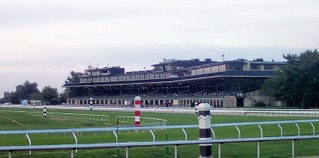 There’s
no magic
formula for breeding success. In fact, it
all boils down to numbers, quality, and luck. Only one out of 35,000+
yearlings born a year will win the Kentucky Derby. Thus, the
logical objective should be to find an affordable combination of a
successful sire and
a successful dam. It stands to reason that, if you mate a dud sire
to
a dud dam, then the odds are you’re going to get a dud as
offspring. There have been proven exceptions to this line of thinking,
of course. (Mojo prefers to focus upon the success of the dam and
her offspring.) There’s
no magic
formula for breeding success. In fact, it
all boils down to numbers, quality, and luck. Only one out of 35,000+
yearlings born a year will win the Kentucky Derby. Thus, the
logical objective should be to find an affordable combination of a
successful sire and
a successful dam. It stands to reason that, if you mate a dud sire
to
a dud dam, then the odds are you’re going to get a dud as
offspring. There have been proven exceptions to this line of thinking,
of course. (Mojo prefers to focus upon the success of the dam and
her offspring.)
Keeneland
assigns each horse a sale day based on the
yearling’s husbandry ranking (sire/dam success and the
success of the yearling’s ancestors) and foal date. Success is
relative; and the
“type” of races that a yearling’s
relatives have won contributes to its ranking. For example:
Winning the Lone Star Derby is a success; but it is a far different
success than winning the Kentucky Derby. As such, a horse’s
dam may have won seven out of eight races, and that is successful at
any level; but her sale date will be later if those wins were
in South America (per se), were not stakes races (called
“black
type”), or were not “graded”
stakes—the most prestigious and internationally recognized.
Thus, the more black type, the better the success is considered to be
in this regard.
The average
daily price is also a reflection of the anticipated value of the horses
sold that day. As such, a look at the historical sale trends will
provide a general price point for which a person can plan their
particiular budget.
All horses turn
a year older on January 1st
no matter their actual birth date. That said, a horse that is born in
January or February is much more mature (physically and mentally), than
one that is born in May of the same year. Unless, the late foal is one
heck of a runner, he or she is probably going to need more time to grow
into that that body. For those wishing to race a two-year-old the
following spring, a May foal probably will
have limited competitive ability (at that point). However, a sound,
healthy two-year-old that starts coming around
later in the year, is one that could provide lots of excitement as a
young three-year-old.
Overall Thoughts
The pleasant
challenge of selecting the right horse can be summed up in
four thoughts: Personal preference about a particular sire; careful
analysis of the dam’s racing success and that of her
offspring; a keen eye for conformation; and a lot of good Mojo.
As you
would expect, bidding on horses is calculated. Plan to
attend the sale on the days that historically offer yearlings that are
in your price range. With those dates in mind, study the catalog
pages (online catalogs are available months in advance on the sales
company's website) and prepare a list of horses that offer sire/dam
combinations that are “successful” (for the
reasons explained above) in terms of wins—these are the
types
of horses that should have your undivided attention.
|
|
